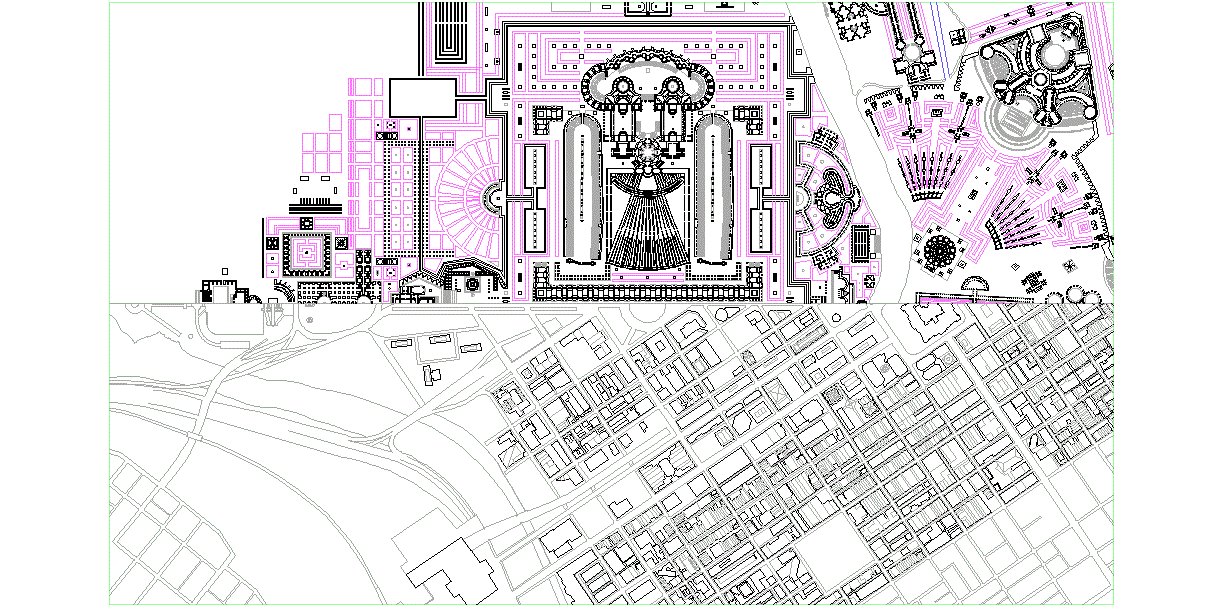2003.01.23
ideas
Hyper Size: virtually small, virtually medium, virtually large, virtually extra large; a virtual bigness book. This is where scale in architecture goes.
2003.02.12 12:33
Re: plagiarism
Regarding architecture and plagiarism here's a short exchange from DESIGN-L 3 August 2001:
lauf-s wrote:
See how the Frank Lloyd Wright's Solomon R. Guggenheim Museum of New York reenacts Giuseppe Momo's 1932 entrance hall with double-helix ramps of the Vatican Museum.
[MK replied:]
Isn't the word 'plagiarism'? Even the dome is the same configuration. I noticed that when I visited the Vatican museum in 1966.
[to which lauf-s replied:]
I believe you are correct about Wright plagiarizing Momo, in that plagiarize means: to steal or pass off as one's own (the ideas or words of another); use (a created production) without crediting the source; to present as new and original an idea or product derived from an existing source. But the buildings themselves do not plagiarize each other, rather they manifest reenactment. For example, if Wright had acknowledged Momo's design, then Wright would no longer be guilty of plagiarism, but the Guggenheim as a building wouldn't actually change because of the acknowledgment.
ps 12 February 2003
Simply put, if sources are acknowledged, then plagiarism does not exist. Furthermore, reenactment exists whether a source is acknowledged or not.
Tomorrow, 13 February, is the feast of St. Catherine de Ricci, whose name some may recognize from the Dominican Motherhouse of St. Catherine de Ricci, an unexecuted design by Louis I. Kahn. St. Catherine was indeed a 'reenactor' in that she for twelve years reenacted the events leading up the Crucifixion, beginning Holy Thursday and ending Good Friday afternoon, even including the appearance of stigmata.
I have to wonder whether Kahn ever took the time to research St. Catherine de Ricci while designing the Motherhouse dedicated to the Saint. Are there perhaps clues within the convent design that may suggest Kahn was aware of the Saint? Honestly, who knows. All the same, Kahn for sure did some reenacting himself with the design.
pss from DESIGN-L 2003.01.10
Check out Le Corbusier's plan for rebuilding Berlin (1961, i.e., just before the Wall) at the end of volume 7 of the Oeuvre Complete. In retrospect, it is almost bizarre in its intentions. Note the reenactment of Chandigarh's Great Assembly next to the Reichstag! And the gigantic pronged towers shattered in the east. Urbanism, architecturism and spacism all in one plan.
It's funny. I really like this plan, and would love to see it executed, but not at the cost of losing Berlin in the process. If Disney, for example, ever wants to (again) do a great thematic 'FutureTown' (they actually called it TomorrowLand, didn't they?) they should simply enact this plan, and maybe put a big wall around it. I think I'd even like to live there. A kind of beyond virtual Berlin, like a new double Berlin, again.
[And here's something that's really interesting in its obscurity. Remember all those little sketches depicting bad modern building design that Leon Krier used to draw as contrast to his 'good' designs? I'm betting big money that Krier actually used the axonometric of Le Corbusier's Berlin plan (OC, vol. 7, p.234) as 'inspiration'. The 'lightening-bolt buildings just south of the Tiergarten are a dead give-a-way. Now I know why I always thought those sketches were actually the best buildings Krier ever designed.]
Here are some digital snapshots of Le Corbusier's plan for Berlin, 1961, plus a sketch by Krier and a project by Stirling/Wilford.
Chandigarh and Reichstag
gigantic towers in the east
jpg lightening-bolt buildings at bottom
lightning-bolt building at bottom
1988: Seville: Stadium Development lightening-bolt buildings
| |

030304b ICM with Benjamin Franklin Parkway

030305a ICM with Benjamin Franklin Parkway
|